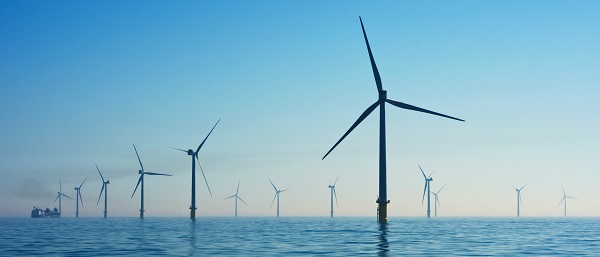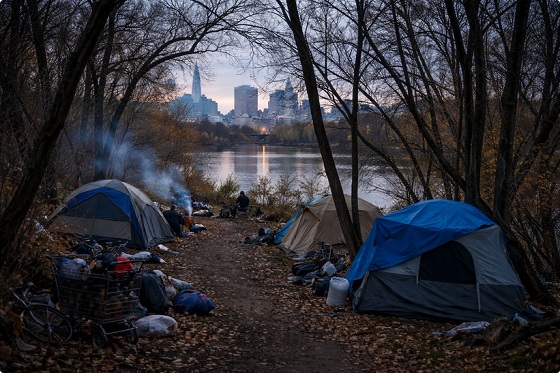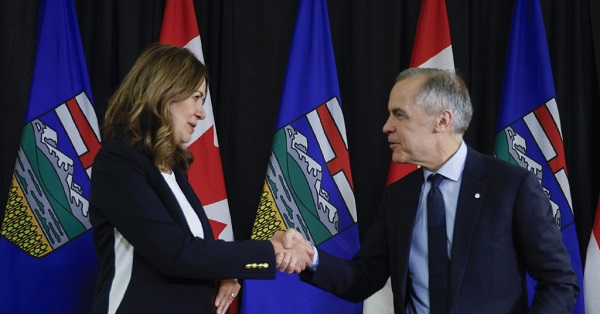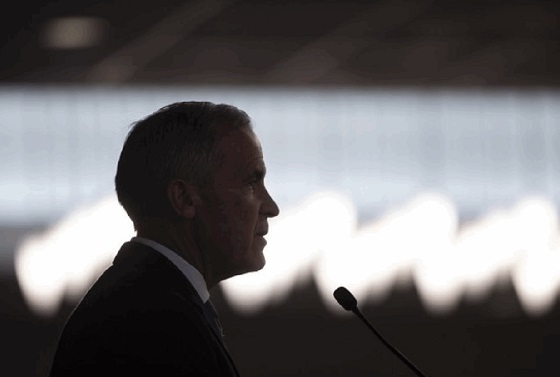International
Pope Francis has died aged 88

From LifeSiteNews
Pope Francis’ reign in the papal throne spanned more than a decade, and witnessed the spread of widespread confusion on numerous matters of the Catholic faith.
Pope Francis has died today, aged 88.
The Holy See Press Office announced the news, writing:
A short while ago, His Eminence Cardinal Farrell announced with sorrow the death of Pope Francis with these words:
“Dear brothers and sisters, it is with deep sorrow that I must announce the death of our Holy Father Francis.
At 7:35 this morning, the Bishop of Rome, Francis, returned to the Father’s house. His entire life was dedicated to the service of the Lord and His Church.
He taught us to live the values of the Gospel with fidelity, courage, and universal love, especially toward the poorest and most marginalized.
With immense gratitude for his example as a true disciple of the Lord Jesus, we commend the soul of Pope Francis to the infinite merciful love of the Triune God.”
Pope Francis’s health had been steadily declining in recent months. He had suffered persistent breathing problems through the winter and was admitted to Rome’s Gemelli hospital on February 14 for bronchitis but was then diagnosed with double pneumonia in what was first described as a “complex” then a “critical” medical scenario. He suffered a number of respiratory crises and failures and presented with symptoms of “mild” kidney failure during his hospitalization. Discharged back to the Vatican after 38-days, Francis began a 2-month convalescence as his doctors revealed he nearly lost his life twice in the spring hospitalization.
He was last in public on Easter Sunday to give the Urbi et Orbi blessing, but looked notably weak, being barely able to raise his arms and with a particularly strained voice.
The Argentinian prelate had led the Catholic Church as Pope since March 13, 2013. He emerged to the world as a surprise successor to Benedict XVI, following the German Pope’s shock resignation in February 2013.
Jorge Mario Bergoglio was ordained on December 13, 1969 and was raised to become Auxiliary Bishop of Buenos Aires in May 1992, before assuming control of the see in 1998. Created cardinal by Pope John Paul II in February 2001, he served as the vice-president and then president of the episcopal conference of Argentina from 2002 – 2011.
In the papal conclave following Benedict XVI’s resignation, Cardinal Bergoglio was elected to the Papal throne on March 13, 2013, at the age of 76.
Pope Francis: A bishop from ‘the ends of the earth’
Announced as the 266th Pope of the Catholic Church on March 13, 2013, Cardinal Jorge Mario Bergoglio was elected on just the second day of the conclave.
Citing concern for the poor as his reason, Bergoglio chose the new papal name of Francis in imitation of St. Francis of Assisi. Addressing the crowds in St. Peter’s Square on the evening of his ascent to the throne, Francis avoided using the term “Pope,” presenting himself instead as “bishop” of Rome. “You know that it was the duty of the Conclave to give Rome a Bishop. It seems that my brother Cardinals have gone to the ends of the earth to get one… but here we are… I thank you for your welcome. The diocesan community of Rome now has its Bishop.”
His appearance on the balcony of St. Peter’s was notable for its departure from tradition: gone were the Pope’s red shoes which symbolized martyrdom; gone were the Papal pectoral cross and ring, with Bergoglio choosing his own instead; gone also was the traditional red mozzetta.
He also dispensed with the usual order of a papal blessing, asking the assembled crowd to pray for him, before imparting a blessing.
The evening was a revelatory one, with many commentators already remarking on the new Pope’s disregard for customs.
He created over 140 cardinals in ten consistories through his reign, and issued well over 3,500 documents, texts or speeches. Among this number were 4 Encyclicals: Lumen Fidei, largely written by Pope Benedict and finished by Francis; Fratelli Tutti, which expounded a form of irreligious fraternity dubbed as “blasphemous”; Laudato Si’, which advocated for “climate change” measures and formed the basis for his future ecological writings and interventions; Dilexit Nos, on the Sacred Heart.
Pope Francis also penned 74 Motu Proprios, 92 Apostolic Letters, 7 Apostolic Exhortations, 20 Apostolic Constitutions, and one Papal Bull. Francis made over 40 official papal trips outside of Italy and visited 65 countries as of September 12, 2024.





Daily Caller
US Halts Construction of Five Offshore Wind Projects Due To National Security


From the Daily Caller News Foundation
Interior Secretary Doug Burgum leveled the Trump administration’s latest broadside at the struggling U.S. offshore wind industry on Monday, ordering an immediate suspension of activities at the five big wind projects currently in development.
“Today we’re sending notifications to the five large offshore wind projects that are under construction that their leases will be suspended due to national security concerns,” Burgum told Fox Business host Maria Bartiromo. “During this time of suspension, we’ll work with the companies to try to find a mitigation. But we completed the work that President Trump has asked us to do. The Department of War has come back conclusively that the issues related to these large offshore wind programs have created radar interference that creates a genuine risk for the U.S.”
Predictably, reaction to Burgum’s order was immediate, with opponents of offshore wind praising the move, and industry supporters slamming it. In Semafor’s energy-related newsletter on Tuesday, energy and climate editor Tim McDowell quotes an unnamed ex-Energy Department official as claiming, “the Pentagon and intelligence services, which are normally sensitive to even extremely low-probability risks, never flagged this as a concern previously.” (RELATED: Trump Admin Orders Offshore Wind Farm Pauses Over ‘National Security Risks’)
Yet, a simple 30-second Google search finds a wealth of articles going back to as early as October 2014 discussing ways to mitigate the long-ago identified issue of interference with air defense radars by these enormous windmills, some of which are taller than the Eiffel Tower. It is a simple fact that the issue was repeatedly raised during the Biden Administration’s mad rush to speed these giant windmill operations into the construction phase by cutting corners in the permitting process.
In May, 2024, the Bureau of Ocean Energy Management’s (BOEM) own analysis related to the Atlantic Shores South project contains a detailed discussion of the potential impacts and suggests multiple ways to mitigate for them. An Oct. 29, 2024 memo of understanding between BOEM and the Biden Department of Defense calls for increased collaboration between the two departments as a response to concerns from members of Congress and others related to these very long-known potential impacts.
The Georgia Tech Research Institute published a study dated June 6, 2022 detailing “Radar Impacts, Potential Mitigation, from Offshore Wind Turbines.” That study was in fact commissioned by the National Academies of Sciences, Engineering, and Medicine (NASEM), a private non-profit that functions as an advisory group to the federal government.
Oh.
A report published in February 2024 by International Defense Security & Technology, Inc. describes the known issues thusly:
“Wind turbines can create clutter on radar screens in a number of ways. First, the metal towers and blades of wind turbines can reflect radar signals. This can create false returns on radar screens, which can make it difficult to detect and track real targets.
“Second, the rotating blades of wind turbines can create a Doppler effect on radar signals. This can cause real targets to appear to be moving at different speeds than they actually are. This can also make it difficult to track real targets.”
The simple Google search I conducted returns hundreds of articles dating all the way back to 2006 related to this long-known yet unresolved issue that could present a very real threat to national security. The fact that the Biden administration, in its religious zeal to speed these enormous offshore industrial projects into the construction phase, chose to downplay and ignore this threat in no way obligates his successor in office to commit the same dereliction of duty.
Some wind proponents are cynically raising concerns that a future Democratic administration could use this example as justification for cancelling oil and gas projects. It’s as if they’ve all forgotten about the previous four years of the Autopen presidency, which featured Joe Biden’s Day 1 order cancelling the 80% completed Keystone XL pipeline, a year-long moratorium on LNG export permitting, an attempt to set aside more than 200 million acres of the U.S. offshore from future leasing, and too many other destructive moves to detail here.
Again, a simple web search reveals that experts all over the world believe this is a real problem. If so, it needs to be addressed as a matter of national security. Burgum is intent on doing that. All half-baked talking points aside, this really isn’t complicated.
David Blackmon is an energy writer and consultant based in Texas. He spent 40 years in the oil and gas business, where he specialized in public policy and communications.
International
No peace on earth for ISIS: Trump orders Christmas strikes after Christian massacres

President Trump said Christmas night that he ordered U.S. forces to carry out airstrikes in northwest Nigeria, targeting ISIS-linked militants he blamed for a campaign of mass killings against Christians.
In announcing the operation, Trump said the United States delivered “powerful and deadly” blows against terrorists who have been “viciously killing, primarily, innocent Christians,” adding that he had warned them repeatedly that the slaughter would bring consequences. He credited precise U.S. strikes, said his administration would not allow radical Islamic terrorism to take root, and closed with a Christmas message blessing the military while signaling more action if the attacks continue.
.@POTUS “Tonight, at my direction as Commander in Chief, the United States launched a powerful and deadly strike against ISIS Terrorist Scum in Northwest Nigeria, who have been targeting and viciously killing, primarily, innocent Christians, at levels not seen for many years, and… pic.twitter.com/ct7rUW128t
— Department of War 🇺🇸 (@DeptofWar) December 26, 2025
The strike followed weeks of intensifying reports documenting targeted violence against Christian communities across northern and central Nigeria, violence that multiple journalists and religious freedom advocates have described as genocidal in nature.
Islamist factions including Boko Haram and allied jihadist militias have, for more than a decade, carried out coordinated assaults aimed at erasing Christian villages from the Middle Belt and the north. Those attacks have repeatedly spiked around Christian holidays, particularly Christmas and Easter.
During a December 16 briefing attended by reporters and advocates, speakers described the violence as a deliberate campaign of obliteration. Steven Kefas of the Observatory for Religious Freedom in Africa pointed to the timing of the attacks as evidence they are religiously motivated, noting that assaults frequently occur on Sundays and Christmas Eve. If the killings were random criminality, he asked, why are Muslim communities not attacked on Fridays or on the eve of their own celebrations?
Critics say the crisis has been compounded by denials from Abuja. President Bola Tinubu has consistently downplayed the religious nature of the violence, framing it instead as banditry or climate-related conflict, and pushed back on international scrutiny even after Trump designated Nigeria a Country of Particular Concern for religious freedom earlier this fall.
While the Nigerian government later declared a state of emergency and dismissed senior defense officials, watchdog groups report that Christians who survive the attacks — and journalists who document them — continue to face threats and intimidation.
According to Open Doors, Nigerian Christians now endure an average of eight violent attacks every day, a level of brutality critics say the government has long minimized or ignored.
The issue has also drawn attention beyond Washington. In a Christmas Eve message, Benjamin Netanyahu said Israel remains the only Middle Eastern nation where the Christian community is thriving and added that militant displacement and attacks against Christians in Nigeria “must end.”
-

 Energy2 days ago
Energy2 days agoThe Top News Stories That Shaped Canadian Energy in 2025 and Will Continue to Shape Canadian Energy in 2026
-

 Frontier Centre for Public Policy23 hours ago
Frontier Centre for Public Policy23 hours agoTent Cities Were Rare Five Years Ago. Now They’re Everywhere
-

 International2 days ago
International2 days ago$2.6 million raised for man who wrestled shotgun from Bondi Beach terrorist
-

 Alberta2 days ago
Alberta2 days agoOttawa-Alberta agreement may produce oligopoly in the oilsands
-

 International8 hours ago
International8 hours agoNo peace on earth for ISIS: Trump orders Christmas strikes after Christian massacres
-

 Fraser Institute9 hours ago
Fraser Institute9 hours agoCarney government sowing seeds for corruption in Ottawa
-

 Daily Caller7 hours ago
Daily Caller7 hours agoUS Halts Construction of Five Offshore Wind Projects Due To National Security
-

 Opinion1 day ago
Opinion1 day agoPope Leo XIV’s Christmas night homily



